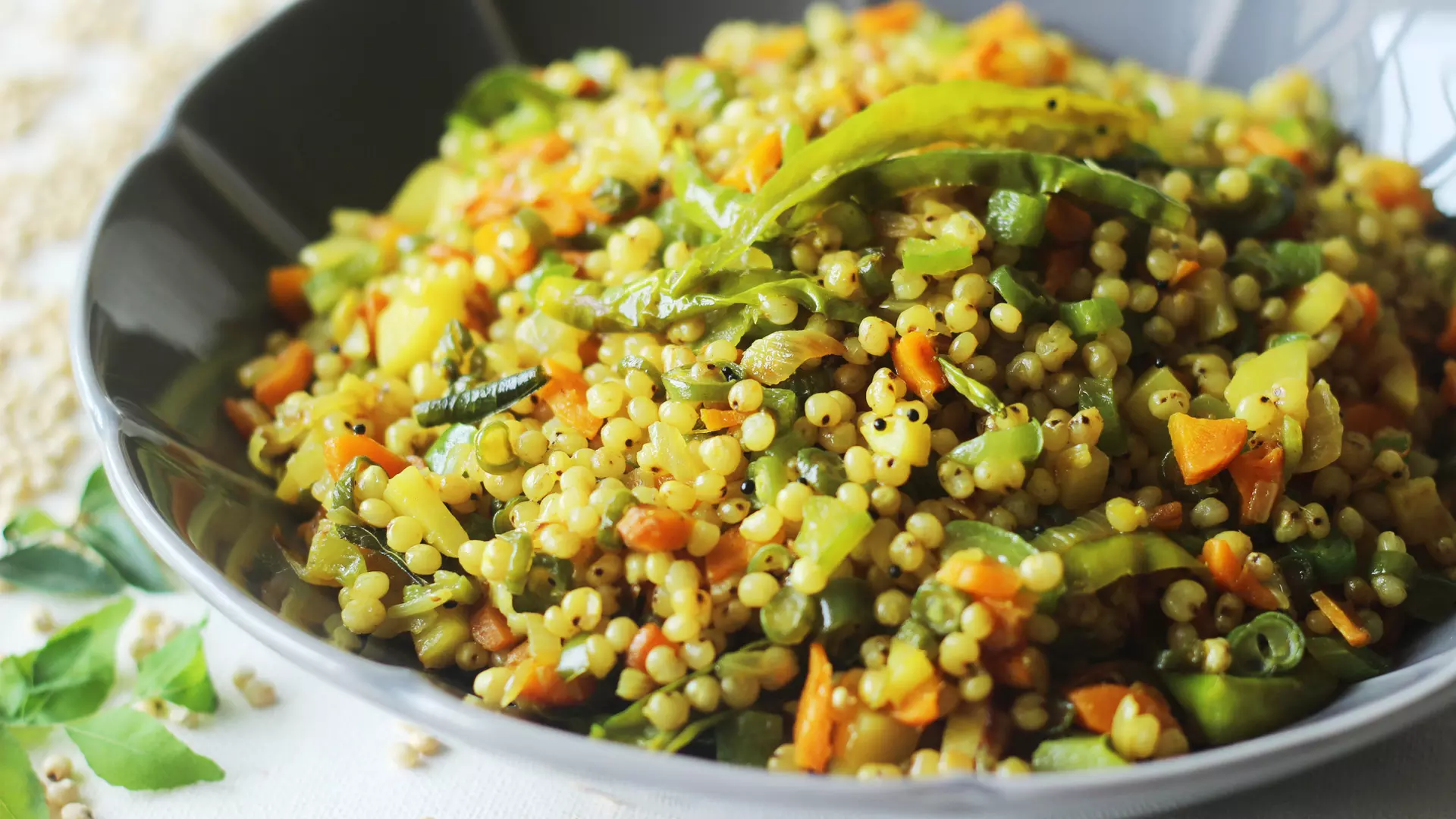
Sorghum upma: This millet is gluten-free, rich in fibre, and helps reduce the risk of diabetes, cardiovascular disease, and is good for gut health. Pic: iStock
Millets: Which one is best for you; when can you consume them?
Everyone knows millets are beneficial for health but not many know each millet can address a specific health issue, and there are seasons when they need to be consumed

In the past few years, traditional millets, which were a staple in many parts of India in the past, has made a grand comeback. This super grain packed with rich nutrients, carries a host of health benefits. The International Year of Millets 2023 too raised awareness about how it can help fight diseases.
It can protect the heart, strengthen the digestive system, prevent diabetes, and boost up the immunity power, as well as improve the nerve and muscle health and also increase energy levels. Rich in niacin, millets are also important for health skin and organ function. It also contains beta-carotene, especially the dark-coloured grains, which converts to vitamin A, and helps your body fight free radicals.
While everyone seems to know that they are beneficial for health, not many know that each millet can address a specific health issue, and there are seasons when they are to be consumed. Moreover, there is a certain way each millet is cooked to gain maximum nutritional value.
Here are a few millets and what they are good for and how they should be consumed:
What millets are good for diabetics
Foxtail millet: This is good for diabetics. It helps to reduce blood sugar levels, cholesterol, and triglycerides among individuals with type 2 diabetes. One study quoted by WebMD found that switching from rice to foxtail millet at breakfast led to lower blood sugar levels after the meal.
When to consume: It is best for the summer months, and as per experts, one should always soak it for 2 hours before cooking and use the minimum amount of oil.
Sorghum millet or jowar: Another millet good for diabetics is sorghum. This millet is gluten-free, rich in fibre, and helps reduce the risk of diabetes, cardiovascular disease, and other lifestyle diseases. It is also known for its cooling properties.
For diabetics, it is a healthy choice as it is considered a complex carbohydrate and takes time to digest thus not shooting up blood sugar levels.
When to consume: Best in summer months, this millet is best cooked after boiling in salt water.
Barnyard millet: This is also beneficial for diabetics since it contains minimal carbohydrates and digests slowly, classifying it as a low glycemic index food. It is also known as Sanwa, Moraiyo, or Mordhan and is low in calories. It tastes like broken rice and is a rich source of protein, iron, and fiber.
When to consume: One should have this millet in the winter season. According to experts, it is best consumed once soaked for 30–50 millets and then cooked with minimum oil.
Ragi: It is rich in protein, iron, calcium, and various essential amino acids. It boasts of a low glycemic index and high fiber content. The best way to eat ragi is to toast it with some oil in a heavy-bottomed pan and add meat or veggies.
When to consume: Famous for its cooling properties, it makes for a healthy summer meal.
What's good for insomnia
Pearl millet or bajra: This millet contains a high amount of magnesium and helps lower blood pressure.Soak it first and bring it to a boil before cooking it further. It can cure insomnia because it helps to relax the body. A pearl millet breakfast protects stress-free day without headaches
When to consume: This is best eaten during the winter season.
What's good for thyroid
People with thyroid dysfunction can certainly use millets like ragi, amaranth, little millets but need to refrain from pearl millet and sorghum as these contain anti-thyroid components.
What's good for weight loss?
Pearl millet rich in essential nutrients like protein, fibre, phosphorous, magnesium and iron is a perfect choice.
It is an excellent source of fiber and is exceptionally low in calories. The fiber content in it keeps your stomach full for a longer time not forcing you to snack and increasing your daily calories count.
Barnyard millet is known for its higher nutrition content than any other cereal grain. It is beneficial for weight loss because of its higher fibre content, complex carbohydrates, and protein. It is also a potent source of calcium and phosphorus and helps maintain strong bones. With its high fibre content, barnyard millet aids in digestion, promotes a feeling of fullness, and can be beneficial for weight management.
Many regions in India use barnyard millet in place of rice because of its similar flavour and texture. It’s easier to cook and digest. It keeps your hunger pangs at bay for a long time.
Ragi has been widely used in weight loss diets all over the world by fitness enthusiasts.
What's good for gut health and cancer?
Sorghum improves digestive health and prevent cancer. Furthermore, 96 grams of sorghum provides approximately 20 per cent of the recommended daily fibre intake. Fiber promotes gut health and regularises your blood sugar levels.
Next Story

